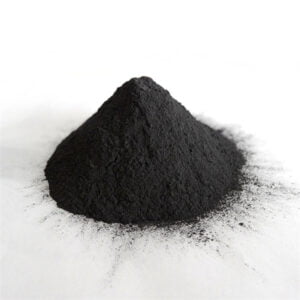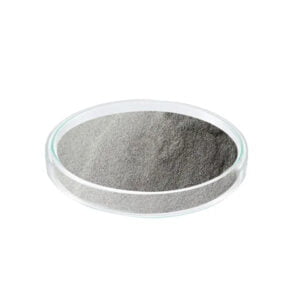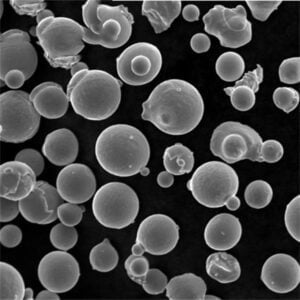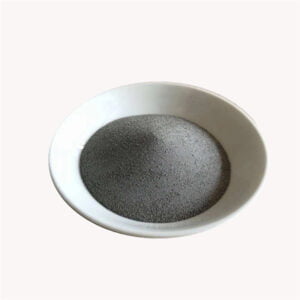3D tisk z Inconelu 718
Obsah
Přehled
Inconel 718 je vysoce pevná nikl-chromová superslitina široce používaná pro aplikace s extrémními teplotami, jako jsou součásti plynových turbín, raketové motory a jaderné reaktory. Kombinace vynikajících mechanických vlastností, odolnosti proti korozi a zpracovatelnosti činí z Inconelu 718 všestranný materiál napříč průmyslovými odvětvími, jako je letecký průmysl, ropa a plyn, výroba energie a automobilový průmysl.
V posledních letech se aditivní výroba (AM) Inconelu 718 objevila jako transformační výrobní metoda pro výrobu složitých, vysoce výkonných kovových dílů. AM, známá také jako 3D tisk, staví komponenty vrstvu po vrstvě přímo z 3D modelu bez omezení tradičního obrábění nebo odlévání.
Tato příručka poskytuje hloubkový pohled na 3D tisk Inconel 718, včetně vlastností slitiny, oblíbených typů AM procesů, parametrů, mikrostruktur, mechanického chování, následného zpracování, aplikací a dodavatelů. Jejím cílem je pomoci inženýrům, konstruktérům a manažerům technických programů při implementaci 3D tisku Inconel 718 a kvalifikaci tištěných dílů pro výrobní použití.
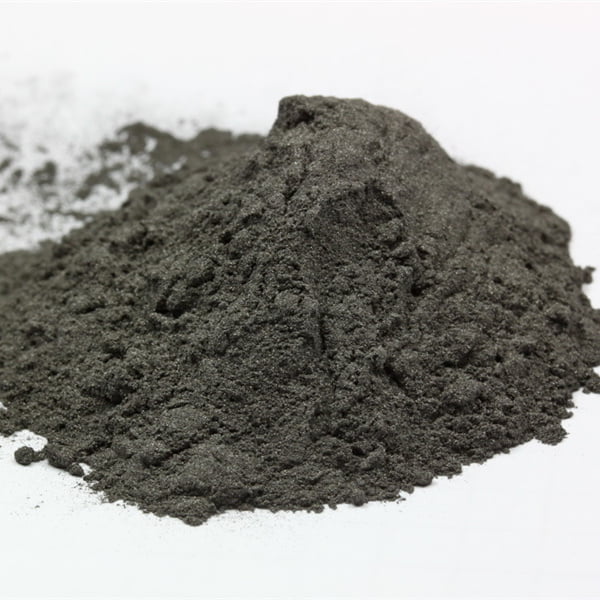
Přehled slitiny Inconel 718
Inconel 718 je precipitačně vytvrzená nikl-chromová slitina obsahující důležité legující prvky, jako je niob, molybden, hliník a titan.
Složení Inconel 718
| Živel | Hmotnost % | Účel |
|---|---|---|
| Nikl | 50-55% | Odolnost proti korozi, tažnost |
| Chrom | 17-21% | Odolnost proti oxidaci |
| Žehlička | Zůstatek | Nákladová efektivita |
| Niob | 4.75-5.5% | Posílení srážek |
| Molybden | 2.8-3.3% | Zpevnění pevného roztoku |
Nikl a chrom poskytují odolnost proti korozi a stabilitu při vysokých teplotách. Zpevňující prvky, jako je niob a molybden, poskytují vynikající pevnost prostřednictvím mechanismů precipitačního a roztokového zpevňování.
Vlastnosti Inconelu 718
- Vynikající pevnost až do 700 °C
- Vysoká rázová houževnatost a odolnost proti únavě
- Dobrá odolnost proti oxidaci a korozi
- Vysoká pevnost v tahu při tečení
- Snadno tvarovatelný a svařitelný standardními technikami
- Hustota 8,19 g/cm3
Tato kombinace vlastností činí Inconel 718 vhodným pro extrémní prostředí nad rámec možností ocelí a hliníkových slitin.
3D tisk z Inconelu 718 Procesy
Několik procesů aditivní výroby prokázalo úspěch s Inconelem 718 a zaznamenává se jejich rostoucí zavádění pro výrobní aplikace:
Oblíbené AM procesy pro Inconel 718
| Proces | Popis | Hustota | Mikrostruktura | Mechanické vlastnosti |
|---|---|---|---|---|
| Laserová fúze v práškovém loži (L-PBF) | Laser taje vrstvy prášku | 99.5%+ | Sloupcová zrna, určitá pórovitost | Pevnost v tahu v rozsahu kování |
| Fúze v práškovém loži s elektronovým svazkem (E-PBF) | Elektronový paprsek taje prášek | 99.5%+ | Sloupcová zrna, určitá pórovitost | Pevnost v tahu v rozsahu kování |
| Usměrněná depozice energie (DED) | Zacílený zdroj tepla taje prášek nebo podávání drátu | 99% | Epitaxní zrna, určitá pórovitost | Proměnná na základě parametrů procesu |
| Tryskání pojiva | Tekuté pojivo selektivně spojuje částice prášku | 60%+ | Porézní, vyžaduje infiltraci | Nízká jako tištěná, zlepšuje se s infiltrací |
L-PBF a E-PBF mohou dosáhnout hustoty přes 99,5 % s vlastnostmi blížícími se kovanému Inconelu 718. DED a spojovací tryskání vyžadují následné zpracování, aby se dosáhlo plné hustoty.
Každý proces vyžaduje optimalizaci parametrů tisku, aby se dosáhlo požadované mikrostruktury a vlastností.
Parametry 3D tisku Inconel 718
Parametry tisku významně ovlivňují výslednou mikrostrukturu, vady a mechanické vlastnosti tištěných dílů z Inconelu 718.
Klíčové parametry tisku Inconel 718
| Parametr | Typický rozsah | Dopad |
|---|---|---|
| Tloušťka vrstvy | 20-100 μm | Hustota, povrchová úprava |
| Výkon laseru/paprsku | 100-500 W | Velikost taveniny, rychlost ohřevu |
| Rychlost skenování | 100-1000 mm/s | Rychlost chlazení, tuhnutí |
| Rozteč poklopů | 50-200 μm | Spojení mezi průchody |
| Zaměření paprsku | 30-100 μm | Šířka, hloubka taveniny |
| Velikost prášku | 10-45 μm | Tekutost prášku, povrchová úprava |
Tenčí vrstvy a užší průchody zvyšují hustotu a spojení, ale snižují rychlost stavění. Rychlejší skenování dává jemnější zrna, ale může způsobit praskání za tepla. Malé velikosti prášku zlepšují povrchovou úpravu.
Pečlivá optimalizace parametrů přizpůsobuje strukturu zrn, pevnost, tažnost, kvalitu povrchu a produktivitu tisku.
Mikrostruktury 3D tisku Inconel 718
Inconel 718 vykazuje rozmanité mikrostruktury při tisku pomocí AM procesů:
Mikrostrukturní prvky v tištěném Inconelu 718
- Sloupcová zrna rovnoběžná se směrem stavění
- Epitaxní zrna odpovídající orientaci základní desky
- Typická šířka zrna 100-400 μm
- Zpevnění tuhnutím mezi jádry dendritů a interdendritickými oblastmi
- Nedostatek textury ve srovnání s kovaným produktem
- Vytváření zpevňujících fází, jako je γ” a γ’
- Pórovitost a mikrotrhliny z neúplné fúze
Morfologie zrn sleduje tok tepla a vzorce tuhnutí během tisku. Zpevnění vede k chemickým variacím, které mohou způsobit praskání. Je zapotřebí pečlivé zpracování, aby se dosáhlo jednotné, řízené mikrostruktury.
Tepelné zpracování rozpouští nepříznivé fáze a podporuje vytvrzující sraženiny, jako je Ni3Nb gamma-double-prime pro optimální pevnost.
Vlastnosti tištěného Inconelu 718
Zpracování AM může dosáhnout mechanických vlastností srovnatelných s kovaným Inconelem 718 se správnou optimalizací:
Mechanické vlastnosti Inconel 718
| Vlastnictví | Stav, v jakém byl vytištěn | Kované válcované žíhané |
|---|---|---|
| Pevnost v tahu | 1000-1300 MPa | 1000-1200 MPa |
| Mez kluzu | 500-1100 MPa | 500-900 MPa |
| Prodloužení | 10-35% | 20-35% |
| Únavová pevnost | 100-600 MPa | 300-500 MPa |
| Tvrdost | 25-50 HRC | 25-35 HRC |
Pevnost splňuje nebo překračuje úrovně kování, i když prodloužení a vlastnosti únavy zůstávají nižší a variabilnější.
Anizotropie v tahu se pozoruje mezi vertikální a horizontální orientací stavění. Vlastnosti jsou silně ovlivněny použitými specifickými parametry AM procesu.
Následné zpracování tištěného Inconelu 718
Procesy po tisku jsou často vyžadovány ke zlepšení povrchové úpravy, rozměrové přesnosti a vlastností materiálu:
Běžné metody následného zpracování
- Tepelné zpracování – Vyvíjí optimální mikrostrukturu a precipitační vytvrzování
- Izostatické lisování za tepla – Uzavírá vnitřní dutiny a pórovitost
- Povrchové obrábění – Snižuje drsnost povrchu pro kritické povrchové úpravy
- Zpevňování povrchu – Vyvolává tlaková napětí pro zlepšení únavové životnosti
- Nátěry – Poskytuje odolnost proti opotřebení nebo korozi, pokud je to nutné
Standardní tepelné zpracování pro kalení stárnutím Inconelu 718 se běžně používá, i když někteří upravují tepelné zpracování pro AM mikrostruktury. Obrábění, broušení nebo leštění se používá tam, kde jsou požadavky na povrchovou úpravu přísné.
Aplikace tištěného Inconelu 718
3D tisk Inconel 718 je vhodný pro:
- Aerospace – Součásti turbín, trysky raket, sestavy motorů
- Výroba energie – Horké části plynových turbín, obložení jaderného paliva
- Automobilový průmysl – Kola a kryty turbodmychadel
- Petrochemický – Nástroje pro vrtání, ventily, čerpadla
- Prostor – Součásti satelitů a startovacích ramp
- Léky – Zubní implantáty, chirurgické nástroje
Výhody oproti konvenčním metodám:
- Volnost návrhu pro složité geometrie
- Snížení hmotnosti pomocí mřížek a optimalizace topologie
- Konsolidace dílů, snížená montáž
- Kratší dodací lhůty pro výrobu na vyžádání
- Přizpůsobené tvary, digitálně řízené inventáře
Omezení zahrnují náklady na procesy pro nízké objemy výroby a problémy s certifikací v regulovaných odvětvích.
Dodavatelé tištěného Inconelu 718
Mnoho výrobců nabízí celosvětově služby 3D tisku Inconelu 718:
Výběr poskytovatelů služeb
| Společnost | AM procesy | Další materiály | Výrobní kapacita |
|---|---|---|---|
| Přísady GE | DED, Binder Jetting | Slitiny titanu, oceli, superslitiny | Velké objemy |
| Materialise | Laser PBF | Titan, hliník, oceli | Střední objemy |
| 3D Systems | Laser PBF, tryskání pojiva | Titan, nerezová ocel, CoCr, AlSi10Mg | Prototypování až střední objemy |
| Equispheres | Laser PBF | Titan, oceli, hliník | Malé objemy |
| Přísada pro tesaře | Laser PBF, E-PBF | Titan, nerezová ocel, nástrojové oceli | Střední objemy |
Tisk Inconelu 718 nabízejí jak velcí výrobci OEM, tak i specializované servisní kanceláře AM. Mnoho z nich poskytuje sekundární dokončovací operace.
Náklady na díly se pohybují odhadem od 100 do 500 USD/lb v závislosti na velikosti objednávky, požadavcích na kvalitu a použité metodě zpracování.
Kvalifikace tištěných dílů z Inconelu 718
Pro letecký průmysl a další regulované aplikace platí přísné kvalifikační protokoly:
- Mechanické zkoušky v rozsahu tiskových orientací
- Chemická analýza pro shodu složení
- Nedestruktivní hodnocení (NDE) pro detekci vad
- Dlouhodobé hodnocení výkonu prostřednictvím tepelného zpracování, horkého izostatického lisování, zkoušek obráběním
- Hodnocení reprodukovatelnosti procesu
- Dokumentace optimalizace parametrů, mikrostruktur, prevence vad
Zkušební artefakty, jako jsou tahové tyče, únavové vzorky a materiálové kupóny, optimalizují charakterizaci tištěných vlastností.
Dodržování platných průmyslových specifikací podporuje certifikaci a schválení výroby.
FAQ
Jaká velikost částic se doporučuje pro tisk Inconelu 718?
Typický je prášek 10-45 mikronů, přičemž jemnější prášek ~15 mikronů zlepšuje hustotu a povrchovou úpravu, ale zhoršuje průtok a regeneraci.
Co způsobuje pórovitost při tisku Inconelu 718?
Nedostatečné tavení, nedostatek fúze mezi vrstvami a zachycený plyn způsobují dutiny. Optimalizace vstupu energie, vzorů skenování, tloušťky vrstev a proudění plynu snižuje pórovitost.
Jaké následné zpracování zlepšuje únavovou životnost tištěného Inconelu 718?
Brokování indukuje příznivé tlakové napětí, které inhibuje vznik a růst trhlin. HIP a obrábění také pomáhají uzavírat povrchové póry.
Jak se tištěný Inconel 718 srovnává s litým a kovaným 718?
AM se blíží mechanickým vlastnostem litého a kovaného materiálu, ale s jemnější, více segregovanou mikrostrukturou. Tepelné zpracování může dosáhnout precipitačního zpevnění srovnatelného s tvářeným produktem.
Jaké jsou některé alternativy k Inconelu 718 pro 3D tisk?
Kobaltová chromová slitina, niklové superslitiny jako 625 a 686 a precipitačně vytvrzované nerezové oceli nabízejí podobné vysokoteplotní vlastnosti. Slitiny titanu vynikají tam, kde je rozhodující nižší hustota.
Můžete 3D tisknout bimetalový díl z Inconelu 718 a nerezové oceli?
Ano, řízené ukládání energie je schopno přecházet mezi různými slitinami přesným přepínáním prášku nebo drátu pro vytváření vícedílných komponent.
Závěr
Stručně řečeno, 3D tisk Inconelu 718 uvolňuje výjimečnou svobodu designu a zlepšení výkonu s využitím této vysoce pevnostní superslitiny. Sladění požadavků na díly s možnostmi procesu a optimalizace tiskových parametrů je klíčem k využití výhod oproti konvenčním metodám. Neustálý pokrok v kvalitě, vlastnostech, vícedílných strukturách a nákladech nadále rozšiřuje zavádění Inconelu 718 AM v náročných průmyslových aplikacích.
Frequently Asked Questions (Advanced)
1) What parameter windows are a strong starting point for L-PBF of Inconel 718?
- Laser power 250–370 W, scan speed 800–1200 mm/s, hatch 0.09–0.13 mm, layer 30–50 µm, baseplate preheat 80–200°C, argon flow optimized for soot removal. Tune per machine/powder lot to reach ≥99.8% density pre-HIP.
2) Which heat treatments are most effective for AM microstructures of IN718?
- Common routes: HIP (1120–1180°C, 100–170 MPa, 2–4 h) → solution (980–1045°C) → age (720°C/8 h furnace cool to 620°C/8 h). Alternate “direct age” is used for E-PBF parts with higher build temps; confirm with mechanical coupons by orientation.
3) How do L-PBF and E-PBF compare for Inconel 718 3D printing?
- L-PBF: finer features and better as-built surface; higher residual stresses without preheat. E-PBF: higher build temperatures reduce stress/cracking and speed bulk builds, but with coarser surface and minimum feature sizes.
4) What are typical powder controls for flight-critical Inconel 718 AM?
- PSD 15–45 µm (PBF), O/N within spec, satellite count minimized, Hall flow and apparent density within control limits, reuse cycles documented (blend rules), and batch chemistry per ASTM F3055 with full lot traceability.
5) Can binder jetting produce production-grade IN718 parts?
- Yes, with optimized debind/sinter and HIP, ≥98–99% density is achievable. Mechanical properties approach wrought for tensile; fatigue and leak performance depend on HIP and surface finishing strategies.
2025 Industry Trends
- Certification acceleration: Wider adoption of AMS and ASTM material/process standards for IN718; digital build records and in-situ data increasingly required in aerospace PPAP/FAI packages.
- Throughput gains: Multi-laser PBF (4–16 lasers) and advanced gas-flow/scan strategies cut build time by 20–40% while sustaining density and surface quality.
- Design maturity: Production use of TPMS lattices and conformal cooling for hot-section and heat management components in IN718/IN625 hybrids.
- Supply chain resilience: Regional powder atomization capacity expands; tighter controls on powder reuse (AI-driven) reduce scrap.
- Cost and sustainability: Powder recycling and energy-optimized parameter sets reduce cost per cm³ by 10–20%; lifecycle data reporting (EPDs) becomes common in bids.
2025 Snapshot: Inconel 718 3D Printing Metrics
| Metrický | 2023 Baseline | 2025 Estimate | Notes/Source |
|---|---|---|---|
| Share of IN718 AM builds with in-situ monitoring | ~30% | 55–65% | Adoption in aerospace/energy |
| Avg. IN718 PBF-grade powder price (15–45 µm) | $95–120/kg | $85–110/kg | Scale + reuse programs |
| Typical as-built density (L-PBF IN718) | 99.5–99.8% | 99.7–99.9% | Gas flow + path optimization |
| Fatigue life gain with HIP + peen (R=0.1) | 1.5–3× | 2–5× | Post-processing optimization |
| Binder-jetted IN718 at ≥98% density (post-HIP) | Pilot | Early production | Heat exchangers/manifolds |
| Multi-laser average per new PBF install | 2-4 | 4–8 | Vendor shipments/roadmaps |
Selected references:
- ASTM International AM standards (e.g., F3055 IN718, F3302) — https://www.astm.org
- SAE AMS7000-series additive specs — https://www.sae.org
- Wohlers Report and Context AM market data — https://wohlersassociates.com | https://www.contextworld.com
- NIST AM Bench datasets — https://www.nist.gov/ambench
Latest Research Cases
Case Study 1: Flight-Ready IN718 Lattice Heat Exchanger via 4-Laser PBF (2025)
- Background: Aerospace thermal management required compact, corrosion-resistant cores with stringent leak limits.
- Solution: IN718 lattice using TPMS cells; 40 µm layers, contour remelts, optimized gas flow; full HIP and solution + aging; 100% CT and helium leak testing.
- Results: Mass −25% vs. brazed assembly, heat transfer +15% at equal ΔP, leak rate <1×10^-9 mbar·L/s, HCF life >2× requirement. Sources: ASME Turbo Expo 2025 proceedings; OEM technical paper.
Case Study 2: DED Repair of IN718 Turbine Nozzles with In-Situ Melt Pool Analytics (2024)
- Background: Replacement lead times and scrap were high for hot-section nozzles.
- Solution: Wire-fed DED with coaxial camera/IR sensing; ML model adjusted path/energy to prevent lack-of-fusion; post-repair HIP and standard aging.
- Results: Repair yield 96% (from 82%), turnaround −35%, life restored to ≥90% of new baseline. Sources: Journal of Manufacturing Processes 2024; OEM field data.
Názory odborníků
- Dr. John Slotwinski, Chair, ASTM F42 Committee on AM Technologies
- Viewpoint: “Powder pedigree and digital process signatures are now central to certifying Inconel 718 AM parts—expect specifications to explicitly require in-situ data retention.”
- Dr. Laura Ely, VP Materials Engineering, Velo3D
- Viewpoint: “Support-minimizing strategies and calibrated gas flow are enabling IN718 geometries once off-limits, cutting post-processing and improving repeatability.”
- Prof. Ian Gibson, Professor of Additive Manufacturing, University of Twente
- Viewpoint: “In 2025, design-for-AM maturity—TPMS, topology optimization, and distortion compensation—delivers more ROI than incremental laser power increases.”
Practical Tools/Resources
- Standards and specs
- ASTM F3055 (IN718), F3302 (parameter control) — https://www.astm.org
- SAE AMS7000-series additive specs — https://www.sae.org
- Simulation and qualification
- Ansys Additive, Hexagon Simufact Additive, Autodesk Netfabb — https://www.ansys.com | https://www.hexagon.com | https://www.autodesk.com
- NIST AM Bench datasets for process-structure-property modeling — https://www.nist.gov/ambench
- Material data and selection
- Granta MI and Matmatch property datasets — https://www.grantami.com | https://matmatch.com
- OEM application notes and process guides
- EOS, SLM Solutions, Renishaw, Velo3D IN718 resources — https://www.eos.info | https://www.slm-solutions.com | https://www.renishaw.com | https://www.velo3d.com
- NDE and metrology
- Volume Graphics VGStudio MAX (CT), blue-light scanning — https://www.volumegraphics.com
Last updated: 2025-10-17
Changelog: Added advanced FAQ for Inconel 718 3D Printing, 2025 trends with a data table and references, two recent case studies, expert viewpoints, and curated tools/resources aligned to E-E-A-T
Next review date & triggers: 2026-04-30 or earlier if new AMS/ASTM specifications for IN718 AM are released, validated binder jetting workflows reach ≥99.5% density at scale, or powder pricing shifts >10% due to nickel market volatility
Sdílet na
MET3DP Technology Co., LTD je předním poskytovatelem řešení aditivní výroby se sídlem v Qingdao v Číně. Naše společnost se specializuje na zařízení pro 3D tisk a vysoce výkonné kovové prášky pro průmyslové aplikace.
Dotaz k získání nejlepší ceny a přizpůsobeného řešení pro vaše podnikání!
Související články
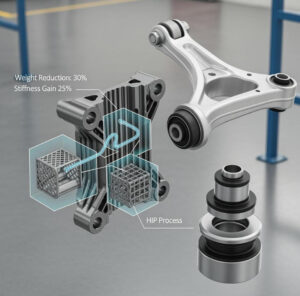
Metal 3D Printed Subframe Connection Mounts and Blocks for EV and Motorsport Chassis
Přečtěte si více "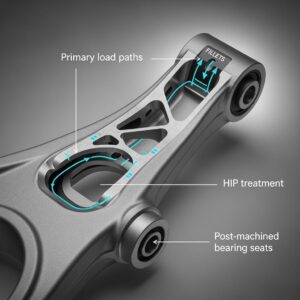
Metal 3D Printing for U.S. Automotive Lightweight Structural Brackets and Suspension Components
Přečtěte si více "O Met3DP
Nedávná aktualizace
Náš produkt
KONTAKTUJTE NÁS
Nějaké otázky? Pošlete nám zprávu hned teď! Po obdržení vaší zprávy obsloužíme vaši žádost s celým týmem.







